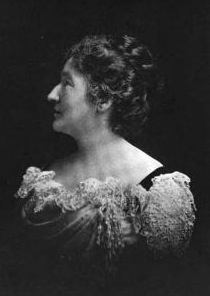
Clara Kathleen Rogers (1844-1931) was an American singer, composer, and teacher of English origin. She began formal studies at the Leipzig Conservatory at age 12, where she studied piano, violin, part-writing, cello, harmony, and voice and graduated with honors at age 16. Although composition classes at the conservatory were not yet open to women, she composed the first movement of her string quartet while a student
Using the stage name Clara Doria, she made her début as an opera singer in Turin, Italy in 1863 as Isabelle in Giacomo Meyerbeer’s Robert le diable. For the next three years, she performed to great acclaim in Genoa, Naples, and Florence. Rogers returned to London in 1866 to continue her concert career, and in 1871 and 1872 she toured the U.S. with the Parepa-Rosa troupe and the Maretzek company.
After settling in Boston, Rogers focused extensively on composition, teaching, and writing. She was well-connected in the leading artistic circles of the day and was friends with Amy Beach, Margaret Ruthven Lang, and Henry Wadsworth Longfellow among others. Rogers promoted the artistic works of her colleagues by hosting regular musicales in her Boston home.
A dedicated teacher who believed educating was “a supreme delight – amounting at times almost to intoxication,” Rogers was appointed professor of voice at the New England Conservatory in 1902. She published important pedagogical books on singing as well as an extensive autobiography.
Her letters and manuscripts are held at the Library of Congress.
Sources
Fox, Pamela. “Rogers [née Barnett], Clara Kathleen.” Grove Music Online. 2001.
Rogers, Clara Kathleen. Memories of a Musical Career. 1919.
Works Featured on Expanding the Music Theory Canon
“Allegro” from Sonata in D Minor
Excerpt
Pages: Polyrhythms, Borrowed Division, Pedal, Predominant, Mediant, Secondary Function, Sentence,
The Clover Blossoms
Excerpt
Pages: Borrowed Division, Secondary Function
Nothing
Excerpt
Page: Secondary Function
Scherzo
Excerpt
Pages: Secondary Function, Period
Aubade
Excerpt
Page: Secondary Function
Spring
Excerpt
Page: Extended Tonicization
Spring, Op. 20
Excerpt
Page: Modulation